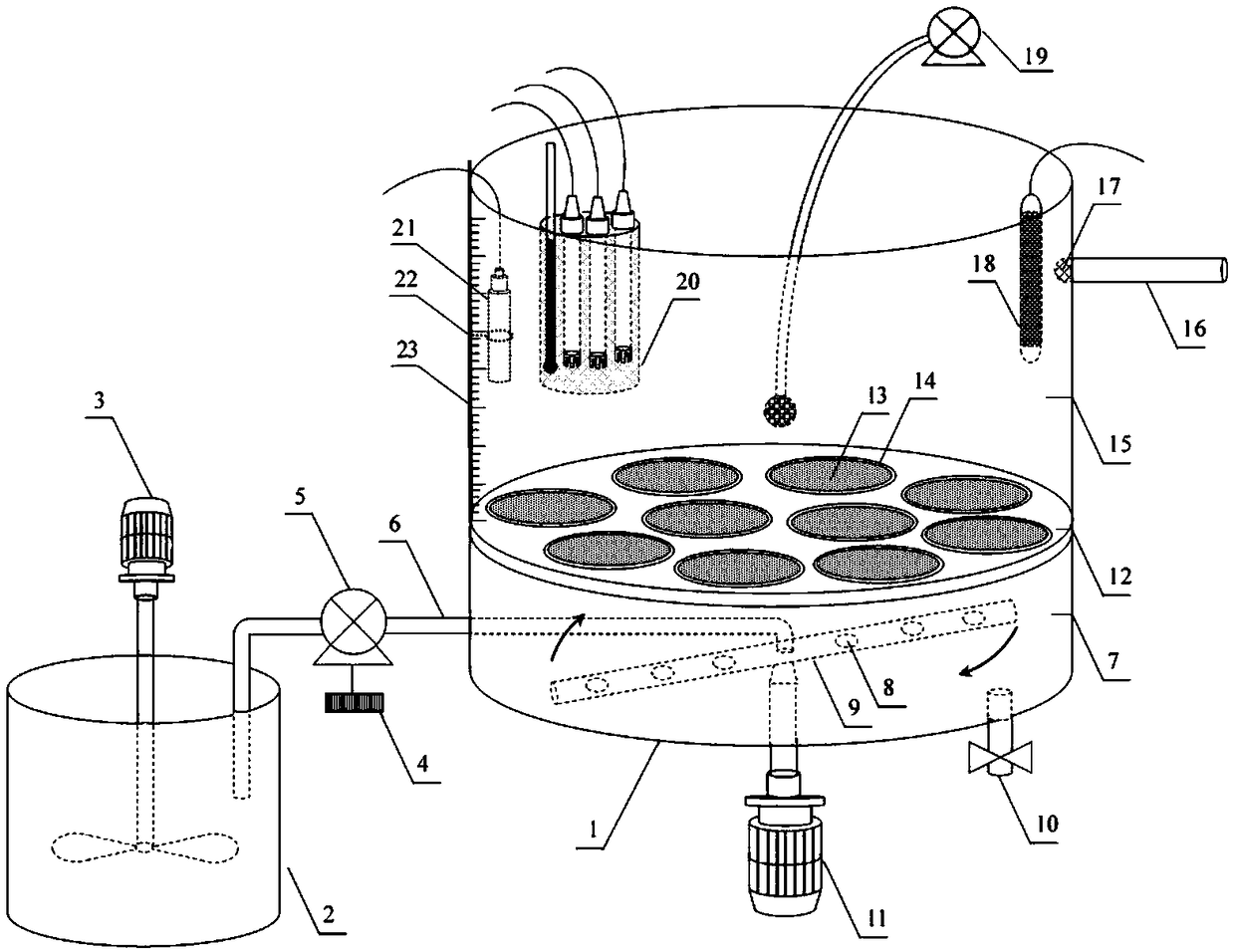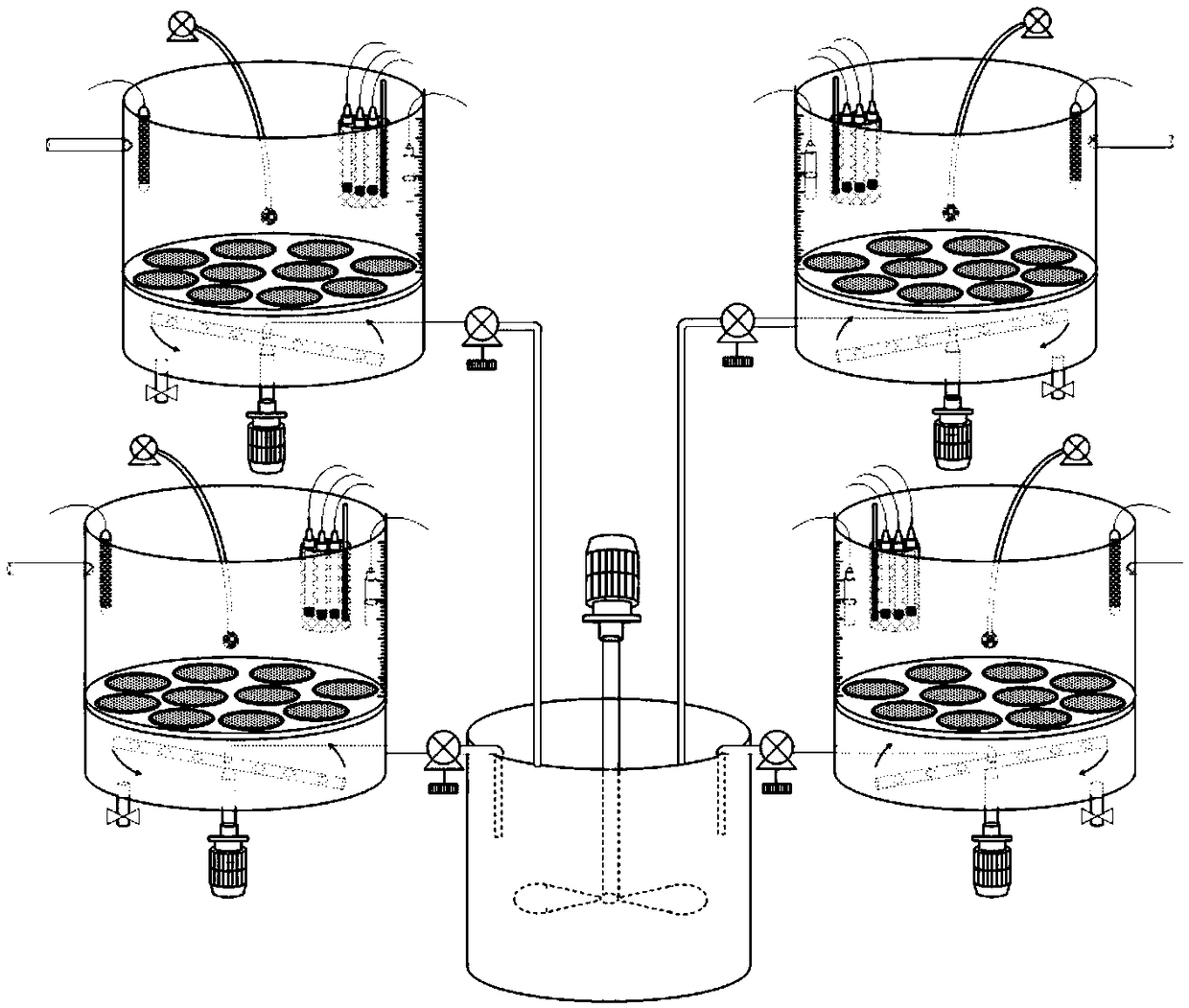Exposure device used for researching chronic toxicity of polluted sediments for fishes
A chronic toxicity and sediment technology, applied in the direction of measuring devices, test sample preparation, sampling, etc., can solve the problems of fish risk thresholds to be established, different fish exposure routes and mechanism of action are not clear, to avoid exposure Test for heterogeneous biological responses, ensure homogeneity, and improve representativeness
- Summary
- Abstract
- Description
- Claims
- Application Information
AI Technical Summary
Problems solved by technology
Method used
Image
Examples
Embodiment 1
[0043] A schematic diagram of an exposure device for studying the chronic toxicity of polluted sediments to fish according to the present invention is as follows figure 1 As shown, it includes an exposure container 1 and a sediment pre-balance container 2. The exposure container 1 is divided into upper and lower parts. The upper part is a test organism exposure chamber 15, and the lower part is a sediment stabilization chamber 7. Partition plate 12 separates, sediment pre-balance container 2 is connected with the hollow conduit 9 in the center of sediment stabilization chamber 7 by peristaltic pump 5 and conveying pipe 6, and sediment obtains the muddy water after balancing by sediment pre-balance container 2, and peristaltic pump 5. Start to transport the balanced mud-water mixture to the sediment stabilization chamber 7 at the lower part of the exposure container 1 through the delivery pipe 6, and the mud-water mixture transported from the pre-balance container 2 is dispersed...
Embodiment 2
[0045] Such as figure 1 As shown, an exposure device used to study the chronic toxicity of contaminated sediments to fish, firstly determine the equilibration time of sediments and target pollutants in the pre-equilibrium container 2, which can be obtained by consulting the target pollutants in similar properties The adsorption kinetics in the sediment can be determined from the literature, and it can also be determined by the adsorption equilibrium pre-experiment. The specific steps of the adsorption equilibrium pre-experiment are as follows: From the literature, it can be known that the lowest visible effect concentration LOEC of TB on Japanese medaka and black-headed minnow is 365 ng / L and 401 ng / L respectively, and the solubility of TB in water is 58.6 mg / L , choose 1 to 3 concentrations between 365ng / L and 58.6mg / L (can be increased exponentially), such as 500ng / L, 5μg / L and 50μg / L, and prepare an aqueous solution of the corresponding concentration; determine the depositi...
Embodiment 3
[0048] Utilize the experimental device of embodiment 1 to carry out the indirect exposure of polluted sediment to fish, and the glass fiber filter membrane that the aperture is 0.45 μ m is fixed in the hole 13 with ring splint 14, to ensure that sediment particles are effectively intercepted and dissolved state Contaminants diffuse freely from the subject organism exposure chamber 15 to the top. Since the sediment is intercepted by the filter membrane in the sediment stabilization chamber 7, the mud discharge pipe needs to be opened regularly to discharge the mud, and the amount of mud discharged is about 144g / d. All the other steps and conditions are the same as in Example 2. By measurement, in the present embodiment, the concentration of TB in the exposure chamber 15 is 408ng / L, which is basically consistent with the water phase concentration of TB in equilibrium in Example 2, and no sediment particles are detected in the exposure chamber (concentration is 0mg / L).
[0049...
PUM
| Property | Measurement | Unit |
|---|---|---|
| diameter | aaaaa | aaaaa |
| diameter | aaaaa | aaaaa |
| pore size | aaaaa | aaaaa |
Abstract
Description
Claims
Application Information
 Login to View More
Login to View More - R&D
- Intellectual Property
- Life Sciences
- Materials
- Tech Scout
- Unparalleled Data Quality
- Higher Quality Content
- 60% Fewer Hallucinations
Browse by: Latest US Patents, China's latest patents, Technical Efficacy Thesaurus, Application Domain, Technology Topic, Popular Technical Reports.
© 2025 PatSnap. All rights reserved.Legal|Privacy policy|Modern Slavery Act Transparency Statement|Sitemap|About US| Contact US: help@patsnap.com



